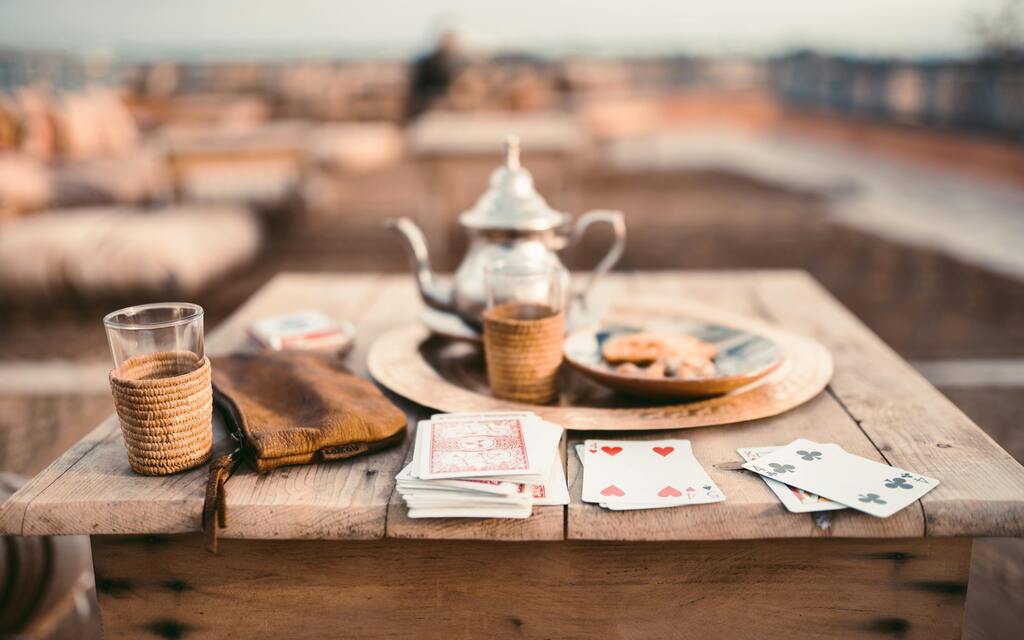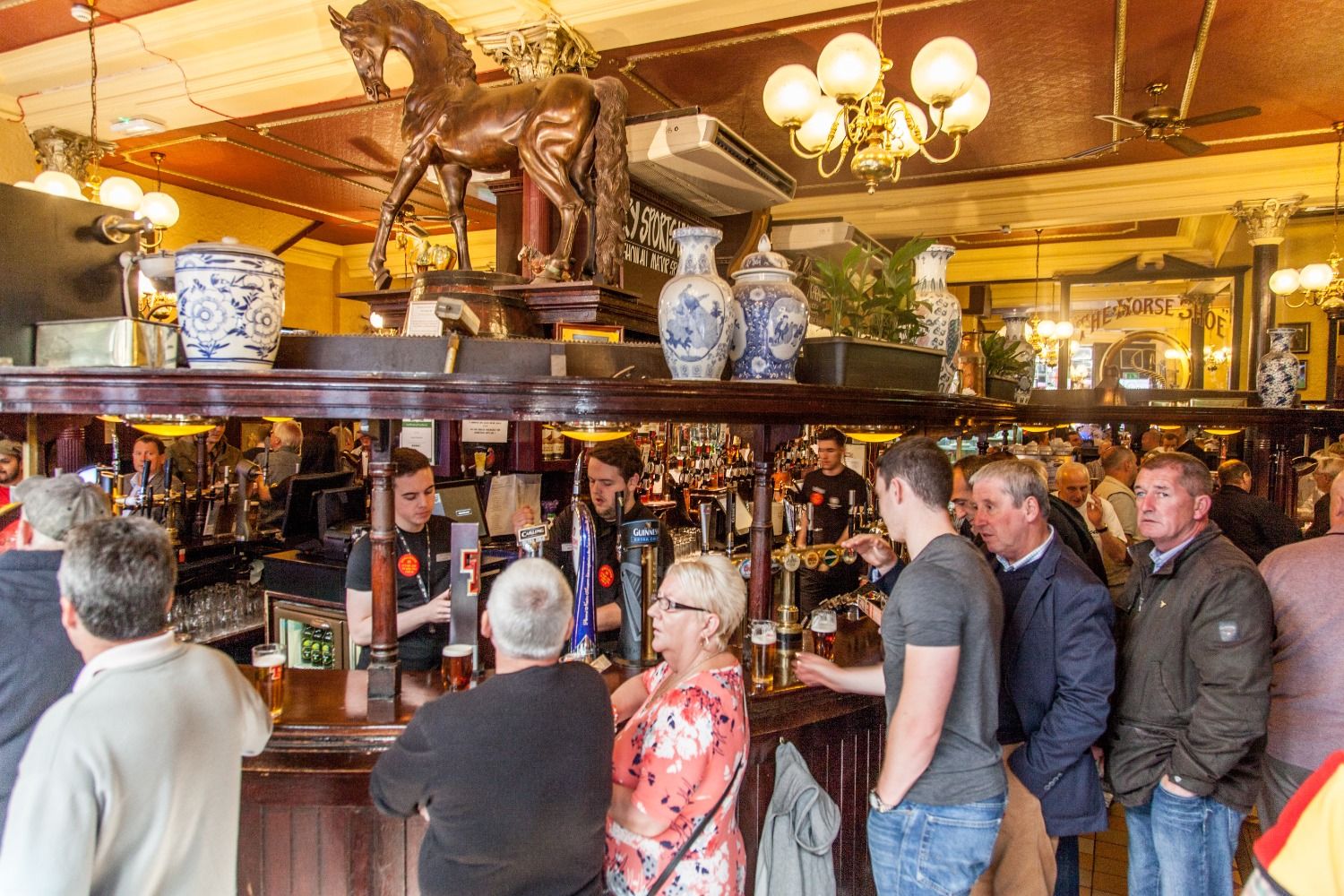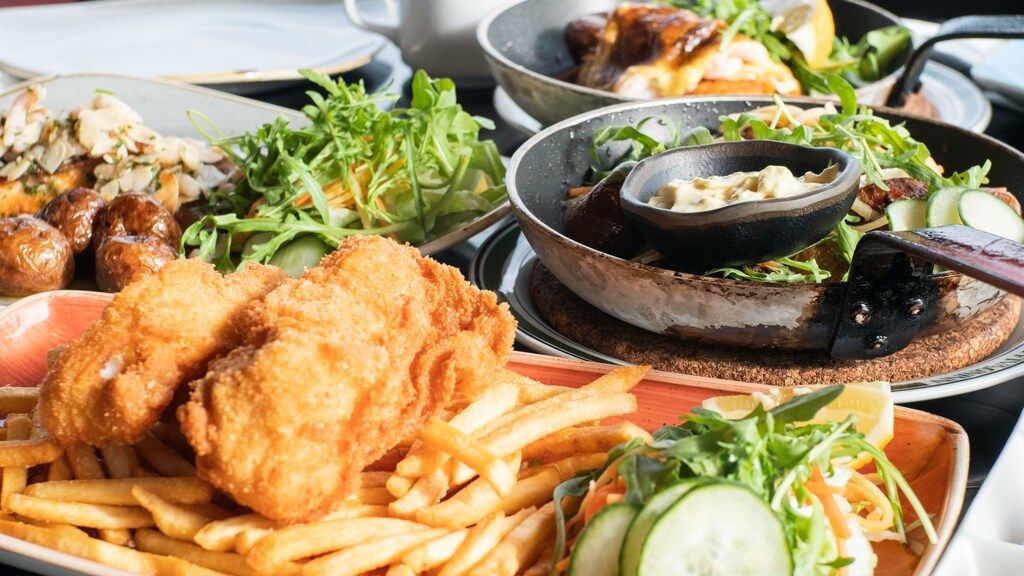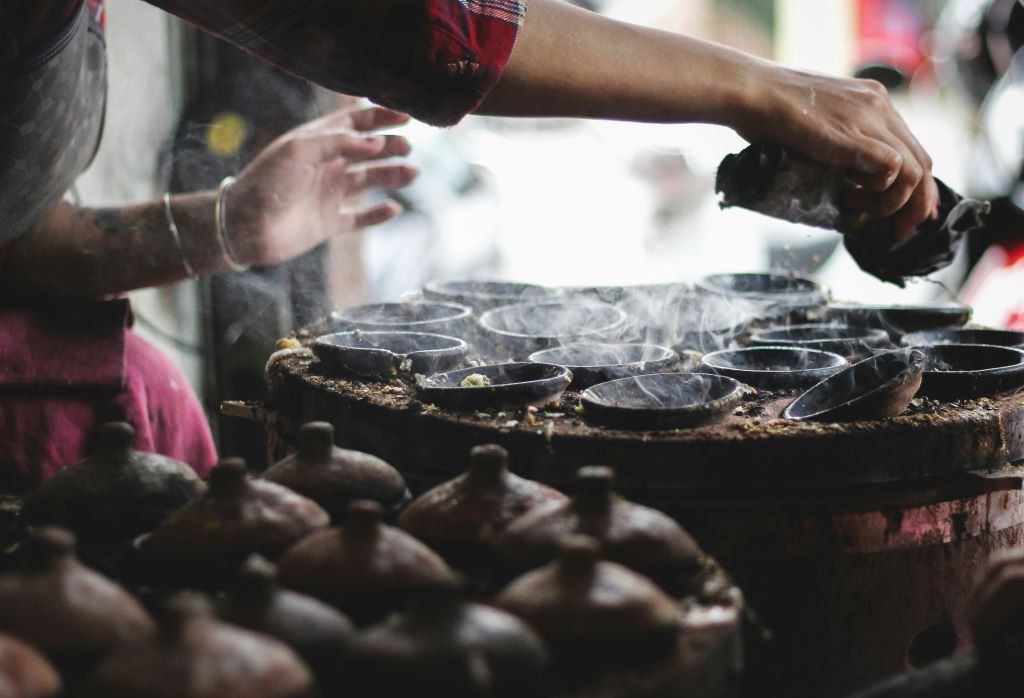

In the last few years, Vietnamese cuisine has been one of the hottest food trends around — and while you’ll find restaurants offering pho and banh mi in cities all over the world, the best place to try Vietnamese cuisine is, of course, in Vietnam! There are so many great dishes for adventurous travellers to enjoy, with every region of the country offering its own sumptuous specialities. Here are a few of our all-time faves for Vietnamise food.
Pho
Every list of top Vietnamese food dishes starts with pho. It’s the country’s national dish: a delicious noodle soup made with a rich, aromatic broth and small pieces of meat. The most popular types are pho bo, made with beef, and pho ga, which uses chicken. There are several different kinds of pho bo, each made with different cuts of beef, from rare steak to slow-cooked brisket. The Vietnamese happily chow down on bowls of pho at any time of day — it’s popular for breakfast, lunch and dinner. Pho noodles are flat, white rice noodles that add a pleasant, chewy texture to the dish. For added carby goodness, many pho cue joints serve this classic Vietnamese soup with quay (fried dough sticks) to dip.
For people from outside Vietnam, pho is a delicious, warm bowl of goodness. However, inside its home country, pho is the subject of a heated debate, with everyone picking a side. Do you prefer Hanoi-style or Saigon-style? The northern Hanoi pho is a more delicate affair, with a very clear broth and just a few light garnishes added with a refined touch. Saigon pho, which originates in the city now officially called Ho Chi Minh City, features bowls piled high with leafy herbs, green veggies, bean sprouts and onions. Be sure to try both to see which style you prefer!
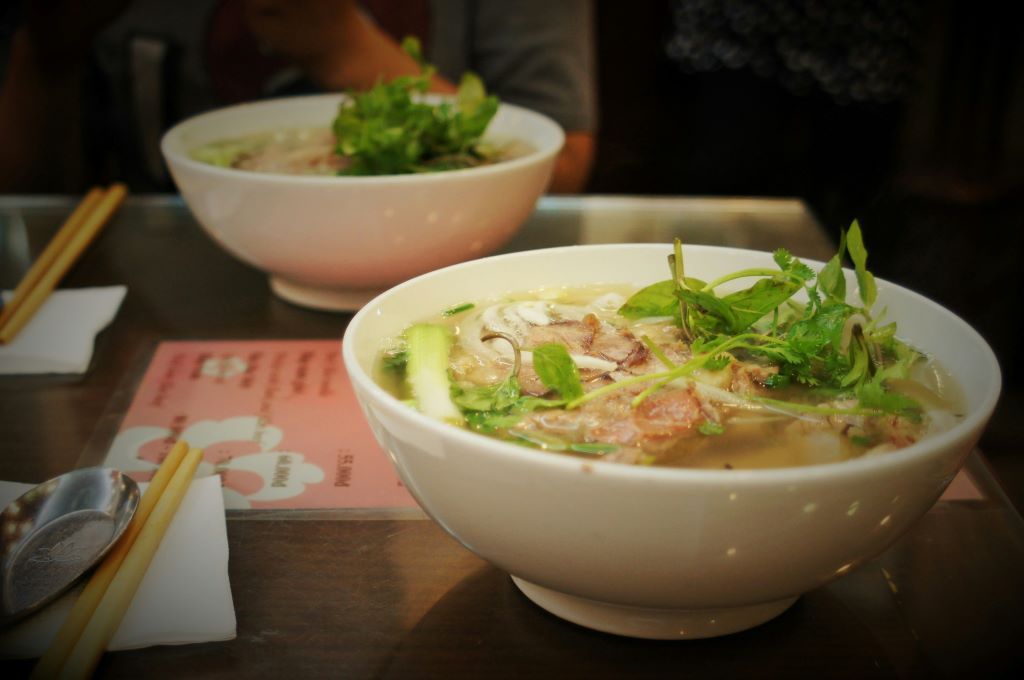
Banh mi
These days, you won’t see much evidence of French colonialism in Vietnam. The language has disappeared and there are only a few colonial buildings left. However, one permanent reminder of the days of French Indochina can be found in this popular Vietnamese food. Banh mi is a stuffed baguette sandwich piled high with whatever ingredients take your fancy. Traditionally, that includes crisp roast pork, pâté and fresh vegetables. It’s ideal for eating on the go, making it one of the most popular types of Vietnamese street food.
A banh mi baguette is a little different from the traditional French style. While French bread usually has a hard, crunchy exterior, Vietnamese bread is soft and fluffy, making it the perfect foil for flavourful ingredients. This is particularly popular at breakfast time. The most popular banh mi shops, such as Ho Chi Minh City’s renowned Banh Mi Huynh Hoa, will have queues stretching around the block.
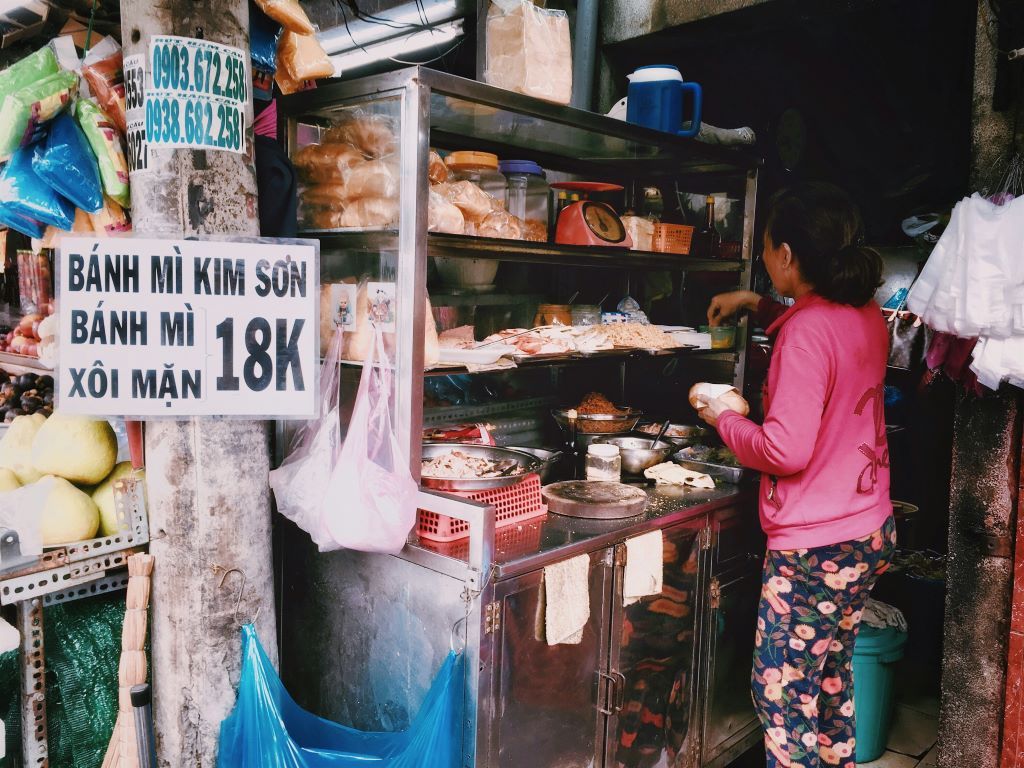
Bun bo Hue
The central Vietnamese city of Hue is often called the imperial capital, as it was where the Nguyen dynasty reigned for 150 years. The local speciality, bun bo Hue, is certainly fit for royalty! This tasty beef noodle soup uses thick, round noodles that blend rice flour and wheat for a unique, chewy texture.
The star of the show here is the beef, which is served in thin slices, but don’t be surprised if your bowl of bun bo Hue contains several other ingredients. Chunks of crab cake are a common addition, and so is jellified pork blood, which you might want to think of as a Vietnamese take on black pudding. All this is served up with plenty of leafy herbs and vegetables in a rich, spicy broth. Naturally, this regional speciality is best eaten in Hue itself, but it’s so popular that you can enjoy it all over the country.
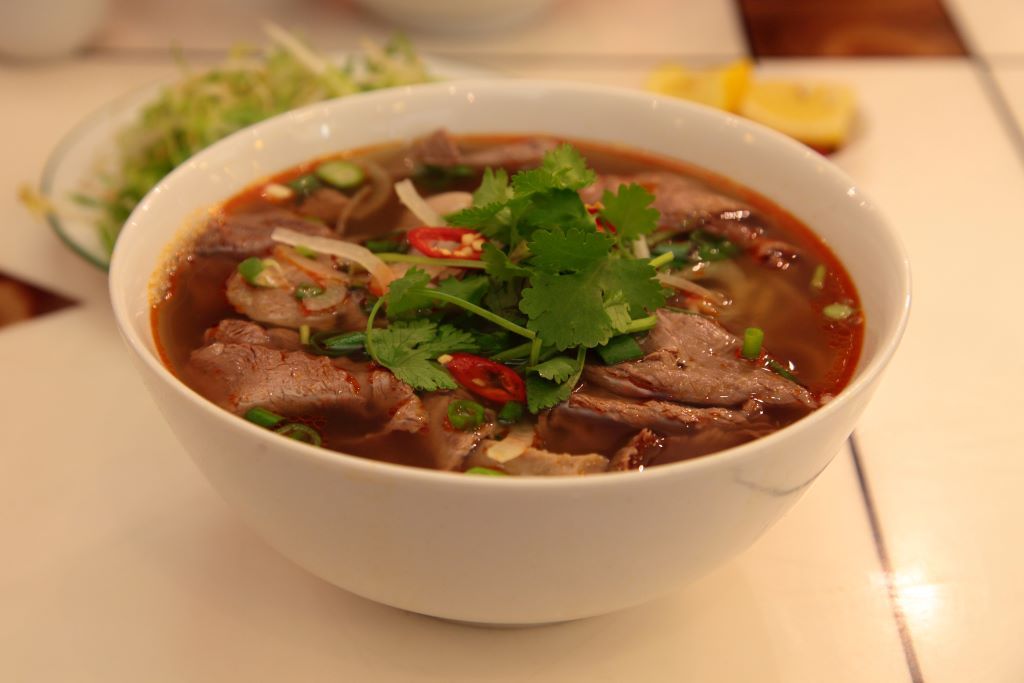
Bun cha
This is one of the most popular types of Vietnamese food in Hanoi. Think of it as a kind of deconstructed Vietnamese salad, but without the hefty price tag it would have in the West! The essential ingredients for bun cha are grilled pork, rice noodles, fish sauce, salad leaves and herbs. You’ll be served all these ingredients in separate dishes on a tray, so it’s up to you to put them all together and indulge.
In Hanoi, the bun cha sauce is almost sacred. Its base is the pungent fish sauce that the Vietnamese love so much, but here it’s mixed with other tasty ingredients that are finely shredded —chilli, unripe papaya, carrot and garlic. Mixed together, they have an irresistible sweet and sour flavour, which is one of the true hallmarks of Vietnamese cuisine.
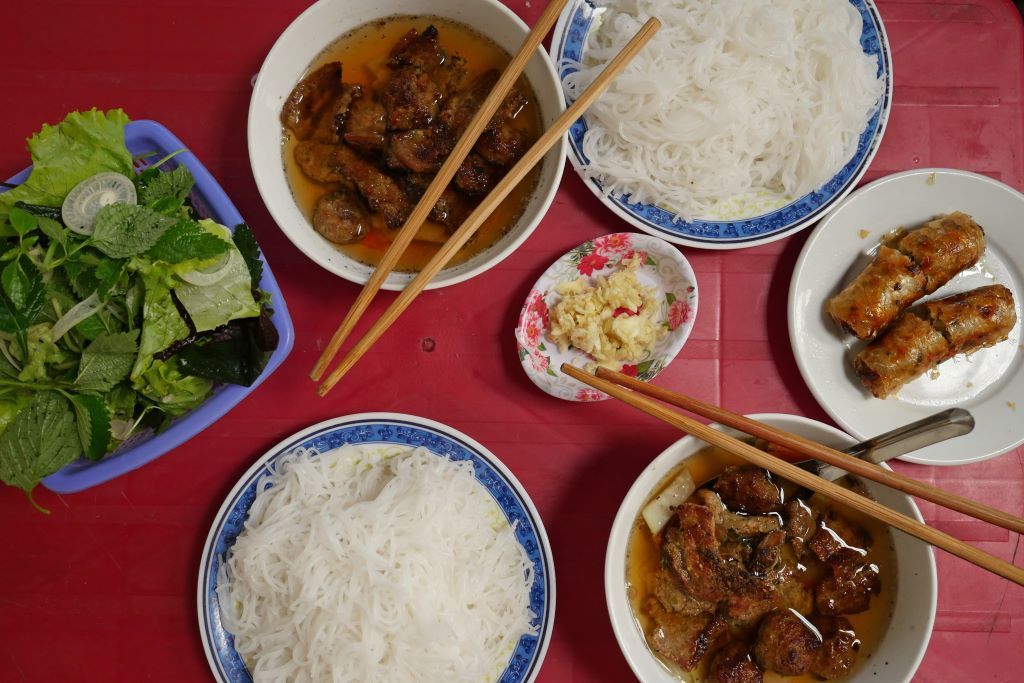
Goi cuon
In the West, gai cuon or goi cuon are more commonly known as summer rolls. This traditional Vietnamese food is kind of like a spring roll, but it’s not cooked. Unlike fried spring rolls, Vietnamese goi cuon doesn’t have pastry wrappers. Instead, the filling is enclosed in delicate rice paper. Not only is that better for your waistline, but it’s also much better for your Instagram — summer roll Vietnamese fillings look amazing in their slightly shiny rice paper wrapping.
Summer rolls are commonly filled with prawns, pork tenderloin and herbs, but there are hundreds of variations to try. It’s fairly easy to find vegetarian summer rolls, sometimes with particularly beautiful fillings like star fruit thrown into the mix. Whatever’s inside your goi cuon, you’ll be offered a dipping sauce on the side. The ever-popular fish sauce is the traditional option, but thick, Thai-style peanut sauce is becoming a more and more common sight, too.
When Vietnamese families get together, they often roll their own summer rolls to snack on. If you’re lucky, you might get the chance to try this, but be warned — it’s trickier than it looks! That rice paper is remarkably sticky, making it hard to get a neat finish. Never mind, though. Even if your goi cuon aren’t picture-perfect, they’ll still taste great!
Prefer your spring rolls to be cooked through? Ask for cha gio, which are the deep-fried, pastry-wrapped morsels you’re probably more familiar with.
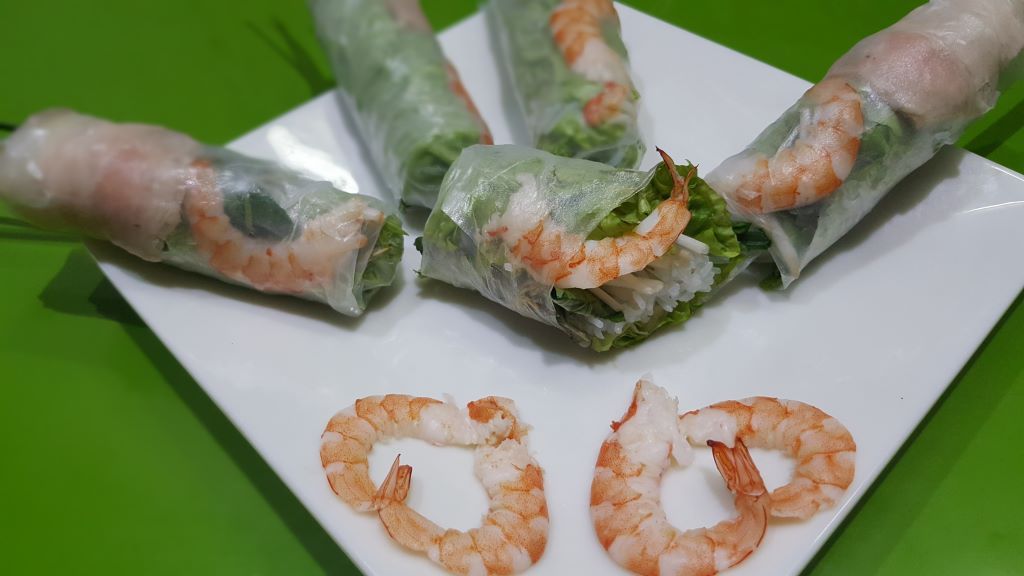
Banh xeo
Here’s another Vietnamese food with some French inspiration: banh xeo is also known as the Viet pancake, as it’s the local take on a crêpe. However, unlike its European cousin, it doesn’t contain any eggs. Instead, it owes its vivid yellow colour to turmeric, which is one of the main ingredients, along with rice flour and coconut cream. It’s that coconut cream that makes banh xeo so addictive, by the way, giving it a slightly sweet flavour that we just can’t get enough of.
Banh xeo originated in central Vietnam, so try it if you’re visiting the beautiful city of Hoi An. That being said, you’ll find variations across the country, with a different filling depending on what the best local ingredients are. Minced pork, prawns and fresh vegetables are all common banh xeo fillings. Traditionally, the Vietnamese like to dip their banh xeo in a sauce made from pork liver and peanuts — but if that doesn’t sound like your cup of tea, fish sauce is a common alternative nowadays.
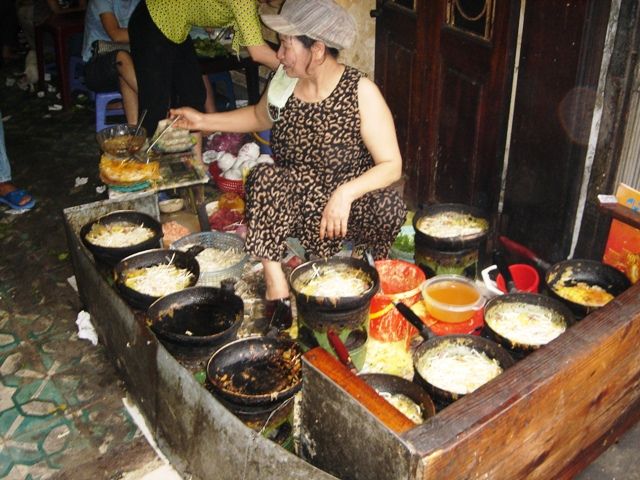
Com tam
Com tam literally means broken rice. This popular Vietnamese food comes from the south of the country, where it began life as a peasant meal. It uses the broken rice grains that, historically, weren’t considered good enough to grace the table of the rich. Today, this humble dish is a true delicacy.
The best place to try com tam is in Ho Chi Minh City, as it’s one of the most enduringly popular local treats. The rice is typically served as the centrepiece of a veritable feast, alongside grilled pork, fried egg, fresh salad, omelette and more. To bring it all together, it’s served with a tasty sweet and sour sauce.
Cao lau
Com tam originated as peasant food, but cao lau comes from the opposite end of the social spectrum. The name of this noodle dish means “high storey” because it was once reserved for the wealthiest people — those who lived on the upper floors of buildings. Today, like the other classic Vietnamese dishes on our list, it’s eaten by everyone — and we’re certainly happy about that!
Cao lau hails from Hoi An. Traditionally, it was only made with water from the Ba Le Ancient Well and fresh herbs from Tra Que Vegetable Village. Only the very best would do for those high-storey diners! The noodles in this dish are thick and chewy, kind of like Japanese udon noodles. There’s lots of added flavour from ingredients like roast pork, bean sprouts and herbs. It’s one of the best Vietnamese noodle dishes and an absolute must for any visitor to Hoi An.
Chuoi nep nuong
Most of the best Vietnamese food is savoury. Want a dessert? Well, you’re in a country with some of the best tropical fruit in the world, so go nuts! However, if you’re keen to try a traditional Vietnamese dessert, there are a few options, and the best one of all is chuoi nep nuong or grilled banana.
Commonly available from street vendors around the country. This sweet treat takes a ripe banana and coats it in a thick batter made from sticky rice flour, sugar and coconut milk. This gives it a chewy, caramelised exterior and a soft, yielding inside. Some street vendors give it an added punch with crushed peanuts or sesame seeds. It’s usually served wrapped in banana leaves, so you can eat it on the go. The perfect treat to nibble on as you explore one of Vietnam’s vibrant night markets.
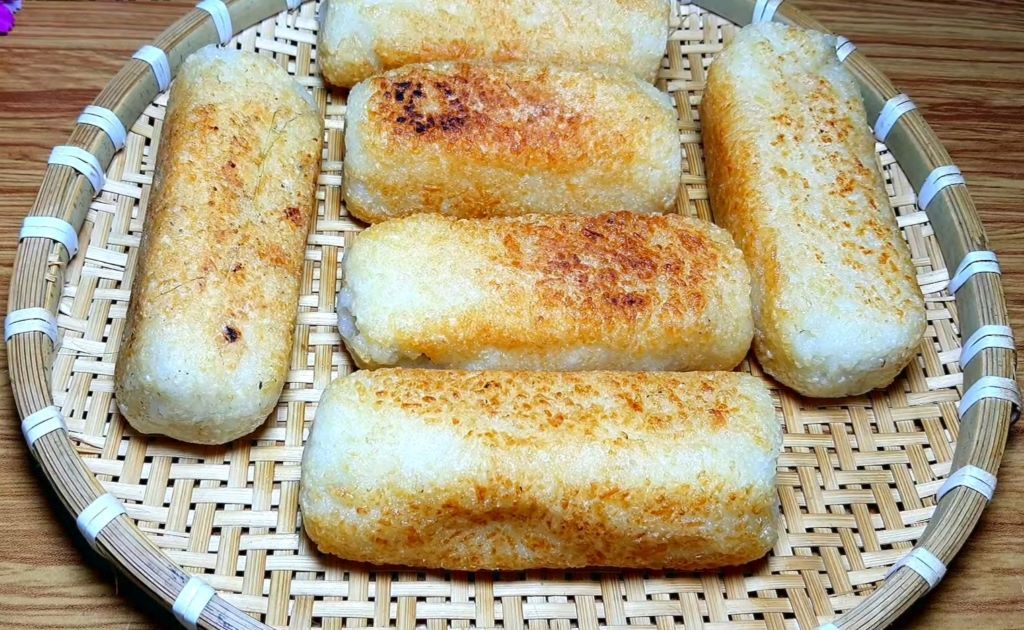
Tiet canh
Let’s be honest: most Vietnamese food is absolutely delicious. However, we had to add something a little scary to round out this list so that even the most adventurous travellers would have a challenge. There are some regional specialities that might turn your stomach. In the Mekong Delta, locals have been known to chow down on grilled mice and wriggly still-living coconut grubs (not together, we might add — thank heaven for small mercies), while in the north, dog meat is still a sadly common sight on many menus. Grilled porcupine is considered a delicacy in the Central Highlands, but one that we don’t particularly want to try. Our pick for the traveller with a stomach of iron? Tiet canh, of course.
What is tiet canh? This northern favourite is a bowl of raw duck blood soup garnished with herbs and peanuts. Its bold, bright red colour makes it surprisingly Instagrammable. But at the end of the day, it’s still a bowl full of raw blood. Are you brave enough to try it?
Before you order a bowl of tiet canh, keep one thing in mind. In some places, the dish is made with raw pig blood, which can be very dangerous to consume. We never thought we’d say these words, but stick with the raw duck blood, just in case. Bon appetit!

Vietnamese food is just one of the attractions waiting for you when you join us on this epic cross-country trip. Also on the menu? …thrilling adventure, stunning nature and amazing history! Join us for a group holiday you’ll never forget!

